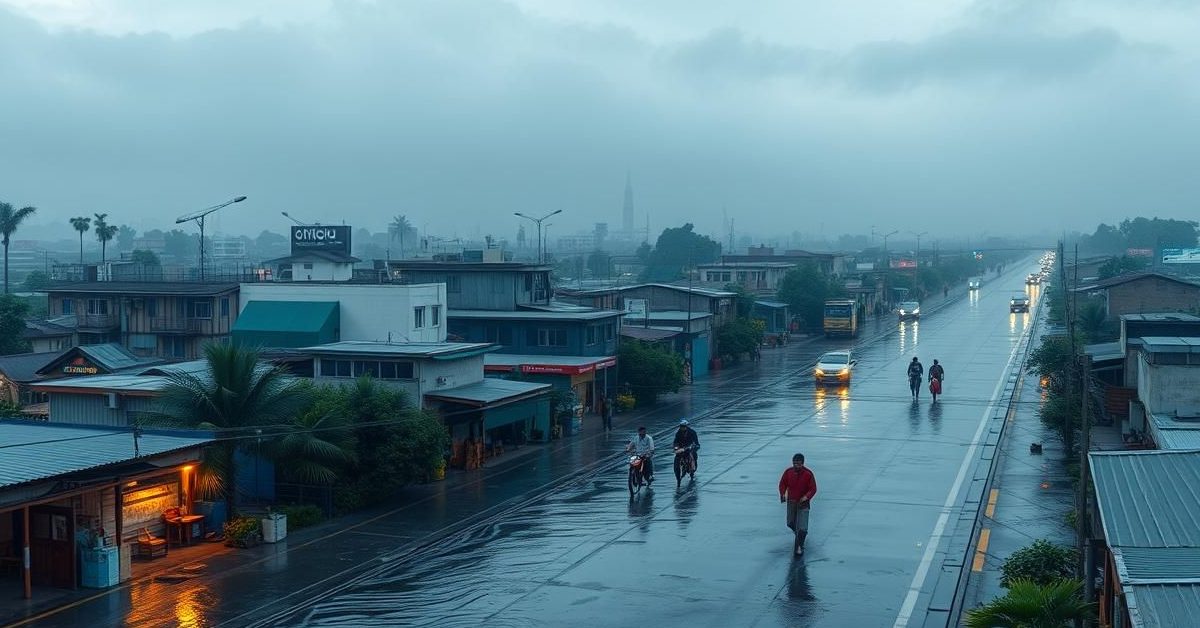A recent World Bank report, created in partnership with India’s Ministry of Housing and Urban Affairs, reveals that Indian cities need a massive $2.4 trillion investment by 2050 to become resilient against climate change.
The Urgency for Climate-Resilient Cities
India’s urban landscape is set for dramatic transformation. By 2050, the country’s urban population is expected to almost double to 951 million. Cities are also projected to generate 70% of all new jobs by 2030, making them vital economic hubs.
However, this rapid growth comes with significant challenges. Indian cities face two major environmental threats: increasing floods and extreme heat. These issues, if left unaddressed, could severely impact urban populations and economic stability.
Rising Flood Risks and Economic Losses
Climate change and unchecked urbanization are escalating the risk of stormwater-related, or pluvial, flooding. The report forecasts a 3.6 to 7 times increase in this risk by 2070.
Annual estimated losses from pluvial flooding alone are projected to surge from $4 billion in 2023 to between $14 billion and $30 billion by 2070. This could expose up to 46.4 million people to floodwaters, highlighting the immense human and financial toll.
The Growing Threat of Extreme Heat
Heat-related deaths in Indian cities could double to over 300,000 annually by 2050. This alarming projection is due to global warming combined with the “urban heat island” phenomenon.
Simple yet effective measures can mitigate this threat. Shifting working hours, promoting urban greenery, implementing early warning systems, and using cool roofs could save over 130,000 lives each year.
Understanding the Urban Heat Island Effect
An urban heat island (UHI) is a localized phenomenon where specific city areas experience significantly higher temperatures than surrounding regions on the same day. This variation, often 3 to 5 degrees Celsius, occurs because concrete-heavy urban landscapes trap heat, intensifying the impact of heatwaves.
Different Types of Urban Flooding
The World Bank categorizes urban flooding into several types:
- Pluvial Flooding: This happens when intense rainfall overwhelms the soil’s absorption capacity and drainage systems, leading to water accumulation on surfaces. Urbanization exacerbates this by increasing impervious areas.
- Coastal Flooding: Often caused by storm surges and strong winds coinciding with high tides, where low atmospheric pressure raises sea levels.
- Fluvial Flooding: Occurs when heavy precipitation or melting snow causes rivers to overflow their banks. The impact is felt most when floodplains are densely populated.
Flash floods are also a recurring concern in urban areas. These are highly localized, intense downpours occurring within a very short span (3-6 hours). In India, flash floods are frequently linked to cloudbursts, and Himalayan states also face challenges from overflowing glacial lakes.
Empowering Urban Local Bodies: A Key Recommendation
The report emphasizes the need for national and state-level interventions. These include boosting private sector engagement, developing a robust financing roadmap, and setting standards to enhance municipal capabilities. Cities, in turn, need to evaluate risks and mobilize capital, including private investment, for mitigation and adaptation efforts.
Central to these solutions is the empowerment of Urban Local Bodies (ULBs). The World Bank’s Country Director for India, Auguste Tano Kouame, highlighted that cities need greater autonomy to make and implement resilience decisions. Many believe this requires full implementation of the 74th Constitutional Amendment Act of 1992.
This amendment granted constitutional status to ULBs, aiming to strengthen local self-governance. However, audits show that many states have yet to fully implement its provisions. ULBs, from Municipal Corporations to Nagar Panchayats, are the first point of contact for citizens, responsible for essential services like waste management and urban planning.
Despite their critical role, ULBs often face resource and personnel shortages, hindering their ability to tackle complex urban issues. To address this, the government announced the Urban Challenge Fund of Rs 1 lakh crore in the Union Budget 2025-26, aiming to support urban growth and development initiatives.
- Indian cities require $2.4 trillion by 2050 for climate-resilient infrastructure.
- Urban population to double by 2050, with cities generating 70% of new jobs by 2030.
- Pluvial flooding losses could reach $14-30 billion annually by 2070.
- Heat-related deaths could double to over 300,000 annually by 2050 due to global warming and urban heat island effect.
- Key recommendations include boosting private sector engagement and empowering Urban Local Bodies.
The World Bank report underscores the critical need for proactive urban planning and investment to ensure India’s cities can thrive sustainably amidst growing climate challenges.















